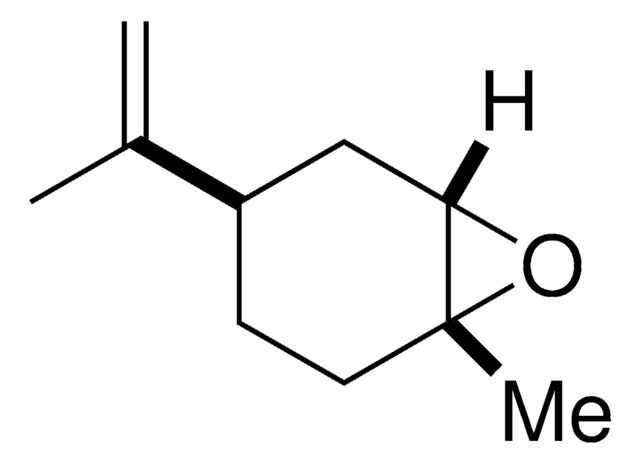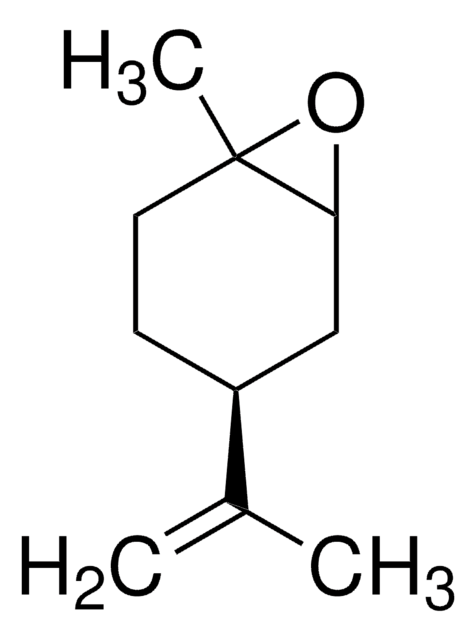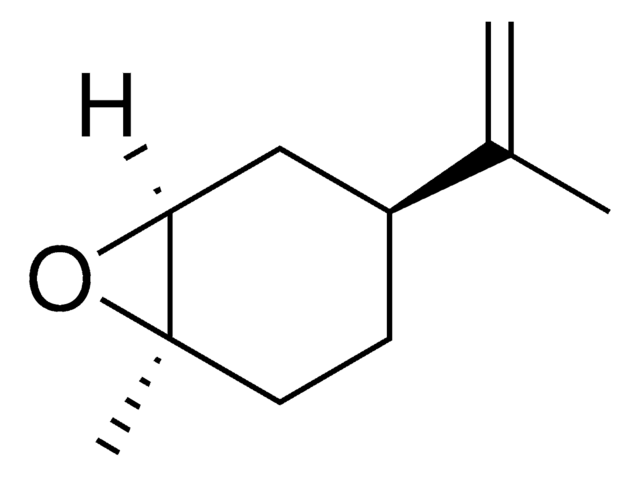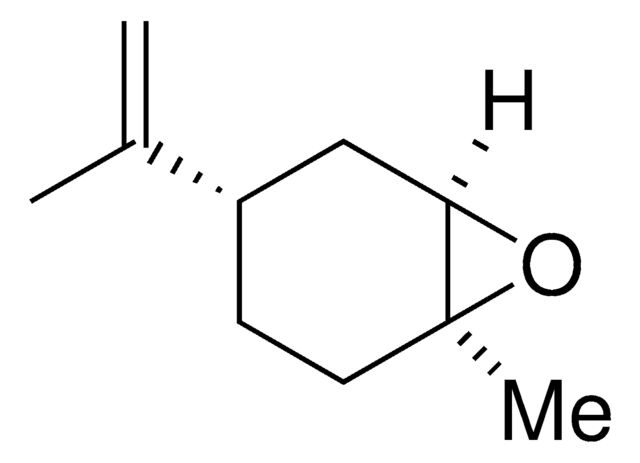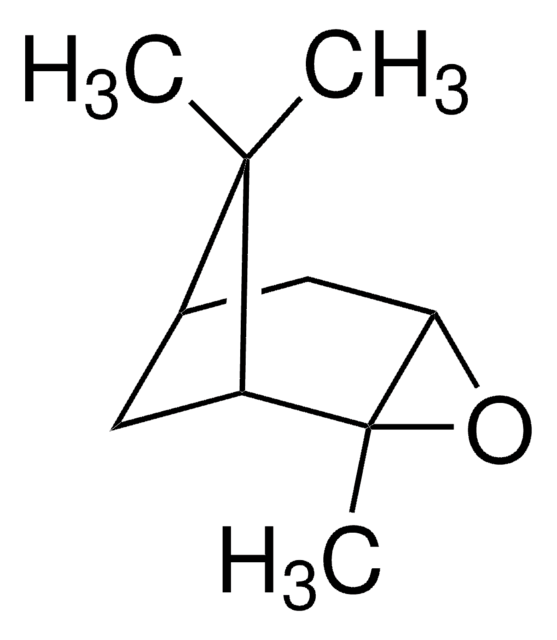921459
trans-(+)-limonene oxide
Synonyme(s) :
(1S,4R,6R)-4-Isopropenyl-1-methyl-7-oxabicyclo[4.1.0]heptane
About This Item
Produits recommandés
Forme
liquid
Niveau de qualité
Groupe fonctionnel
ether
InChI
1S/C10H16O/c1-7(2)8-4-5-10(3)9(6-8)11-10/h8-9H,1,4-6H2,2-3H3/t8-,9-,10+/m1/s1
Clé InChI
CCEFMUBVSUDRLG-BBBLOLIVSA-N
Application
Produit(s) apparenté(s)
Code de la classe de stockage
10 - Combustible liquids
Classe de danger pour l'eau (WGK)
WGK 3
Point d'éclair (°F)
149.0 °F - closed cup
Point d'éclair (°C)
65 °C - closed cup
Faites votre choix parmi les versions les plus récentes :
Certificats d'analyse (COA)
Désolés, nous n'avons pas de COA pour ce produit disponible en ligne pour le moment.
Si vous avez besoin d'assistance, veuillez contacter Service Clients
Déjà en possession de ce produit ?
Retrouvez la documentation relative aux produits que vous avez récemment achetés dans la Bibliothèque de documents.
Notre équipe de scientifiques dispose d'une expérience dans tous les secteurs de la recherche, notamment en sciences de la vie, science des matériaux, synthèse chimique, chromatographie, analyse et dans de nombreux autres domaines..
Contacter notre Service technique
